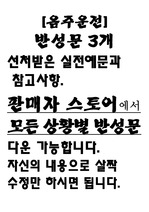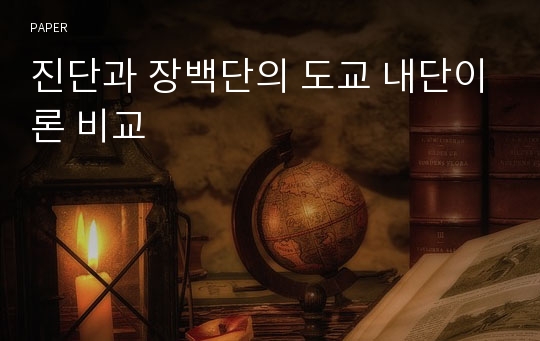* 본 문서는 배포용으로 복사 및 편집이 불가합니다.
서지정보
ㆍ발행기관 : 경상대학교 남명학연구소
ㆍ수록지정보 : 남명학연구 / 35권
ㆍ저자명 : 김경수
ㆍ저자명 : 김경수
목차
Ⅰ. 내단 도교의 맥락Ⅱ. 진단과 장백단의 내단 전승
Ⅲ. 진단과 장백단의 단법 비교
Ⅳ. 진단과 장백단의 삼교회통론 비교
Ⅴ. 맺음말
한국어 초록
중국의 도교사에서 내단도교는 독특한 역사를 갖는다. 필자는 정통 내단도교의 한 파는 당나라 말기부터 북송 기간까지의 일정한 시기에 재야의 인물들에 의해 전승되다가 어느 시점에 홀연히 그 단법이 사라진 것으로 보고 있다. 그 단법의 중요 인물이 진단과 장백단이다.진단은 그 단법을 독창적으로 구성한 것으로 보인다. 그는 도교와 불교의 양쪽에 스승이 있었지만, 어느 한 쪽 스승으로부터 이어받은 법을 고수하지 않았다. 오히려 그가 섭렵한 다양한 이론들을 하나로 통합하여 새로운 이론체계를 창안해 내었다. 장백단은 일생 동안 특정한 스승 없이 재야에서 수련에 몰두하다가 만년에 이르러서야 진단의 단법을 우연히 얻었고, 다시 그것을 자신의 방식으로 정립하였다. 그러나 둘의 단법은 기존의 외단을 배척하고 순수한 내단을 주장한 공통점을 가지고 있으며, 또한 그 기본적인 틀이 연정화기 연기화신 연신환허의 방법이라는 점에서 일치한다.
진단의 단법은 「무극도」에서 잘 드러나고 있듯이 5단계의 수련법이다. 반면에 장백단의 단법은 4단계이다. 진단의 1단계와 장백단의 1단계는 수련을 위한 완전한 준비라는 점에서 같다. 그러나 진단이 말하는 2단계는 연정화기와 연기화신을 모두 포함하는 것임에 반해서, 장백단은 연정화기는 도교의 수련단계로 분류하고 연기화신은 선불교의 수행단계로 분류하는 차이가 있다. 그 다음 진단은 나머지 3단계를 하나로 묶어 연신환허의 경지에 이르는 과정으로 분류하고 있다. 반면에 장백단은 연기화신으로 선천의 神으로 환원된 상태를 궁극의 본원으로 돌이키는 연신환허를 주장한다. 이 과정에서 진단은 오행이론과 『주역』의 이론을 도입하고 있지만, 장백단에게서 오행이론은 연정화기 단계에서 수련하는 것이며 『주역』의 이론은 진단과 유사한 면이 있다. 진단의 수련법은 이론적 도식에 보다 치중한 것인데 반해 장백단의 그것은 보다 실질적인 수련에 초점을 맞춘 것으로 보인다.
나아가 진단의 삼교회통론은 1단계의 과정에서 선불교의 수행이 먼저 필요하고, 2단계 중에서 연기화신의 수련에 다시 필요성이 제기되고 있다. 진단은 『주역』의 이론을 도교 역학으로 전환하여 그의 이론에 채용하였고, 선불교의 효용도 도교식으로 해석하여 그의 이론에 차용하는 삼교회통론을 주장하였다. 반면, 장백단은 보다 실천적인 차원에서 유교의 일상윤리를 수련의 첫 단계로 끌어들이고, 여기에 도교식 수련을 더한 후에 선불교의 수행을 도입한다. 그 또한 선불교의 수행이 내단의 수련에 얼마나 중요한 역할을 하는지 분명한 인식을 하고 있었다. 그러나 결국은 두 사람 모두 도교의 연신환허의 단계가 궁극의 목표라는 점에서는 일치하며, 그 경지는 선불교가 추구하는 깨달음의 경지를 넘어서는 것이라는 점에서는 이의가 없다.
영어 초록
The Internal alchemy has unique characteristics in the history of China Taoism. I Presume that the main branch of legitimate internal Taoism suddenly disappeared from the aegis of between the late Tang dynasty and North Song dynasty, after transmitting by internal Taoists from nongovernment party of Taoism. There were two important internal Taoists, Chen tuan and Zhang Bo-duan.Chen tuan established the unique theoretical system based upon his Internal alchemy. He has two masters from one Taoism and one from Buddhism, however, he did not accept a way from one religion. Instead, he created a new theory by integrating multiple theories and asserting the unification of three religions. On the other hand, Zhang Bo-duan trained and wandered about from place to place for his whole life without having specific advisors, but later he found the method of Chen tuan and established it as his own way. However, the two people have much in common with the point in that it asserted the pure neidan(internal alchemy) not excluding the preexisted external alchemy. In addition, the second thing they have in common is that the fundamental frame is based on ‘YeonJeongHwaGi’, ‘YeonGiHwaSin’, and ‘YeonSinHwanHeo’.
Chen taun’s training method has five processes as drawn in ‘MuGeukDo’, whereas the method of Zhang Bo-duan's theory has only four stages. These two figures had one thing in common that both the first processes are preparation for training. Chen taun’s second process includes ‘YeonJeongHwaGi’, ‘YeonGiHwaSin’, whereas Zhang Bo-duan’s ‘YeonJeongHwaGi’ classified the training process of Taoism and ‘YeonGiHwaSin’ was arranged one of the process in Zen buddhism. In addition, Chen taun integrated the last three stages into one and then classified as the stage for ‘YeonSinHwanHeo’, whereas Zhang Bo-duan asserted for ‘YeonSinHwanHeo’ as an original ‘Qi(energy)’. During this process, Chen tuan accepted 'The theory of five substances' and The Book of Change, however, 'The theory of five substances' is simply the training stage of ‘YeonJeongHwaGi’ and The Book of Change has a similar aspect to Chen taun’s theory. Chen taun’s training is more focused on theoretical schema, whereas Zhang Bo-daun concentrated on the actual training itself.
Later, in Chen tuan’s theory of intermixture of three religions, Zen buddhism’s training is needed for in the first process, the second process requires the training of ‘YeonGiHwaSin’. Chen taun not only applied The Book of Changeto his own theory by transforming Taoism’s system of change, but also interpreted the virtue of Zen buddhism in Taoism and then asserted the theory of three religions. On the other hand, Zhang Bo-duan accepted the ordinary ethics of Confucianism as the first process in training, and then introduced Zen buddhism’s training by adding Taoism’s training. In the end, Chen tuan and Zhang Bo-daun both asserted ‘YeonSinHwanHeo’ as the ultimate objective in Taoism, and furthermore, they also concluded the last stage would be reached beyond spiritual enlightment which Zen buddihism attempts to pursue.
참고 자료
없음태그
"남명학연구"의 다른 논문
 何其芳의 『夜歌』 硏究30페이지
何其芳의 『夜歌』 硏究30페이지 남명 연구 성과의 회고와 전망-정치 분야에 대한 소고22페이지
남명 연구 성과의 회고와 전망-정치 분야에 대한 소고22페이지 남명학 연구성과의 회고와 전망(4)-교육연구27페이지
남명학 연구성과의 회고와 전망(4)-교육연구27페이지 남명 조식 철학 사상 연구에 대한 회고와 전망33페이지
남명 조식 철학 사상 연구에 대한 회고와 전망33페이지 남명문학 연구의 현황과 과제32페이지
남명문학 연구의 현황과 과제32페이지 남명의 생애와 발자취에 대한 연구의 회고와 전망33페이지
남명의 생애와 발자취에 대한 연구의 회고와 전망33페이지 南冥學硏究의 發展史26페이지
南冥學硏究의 發展史26페이지
























